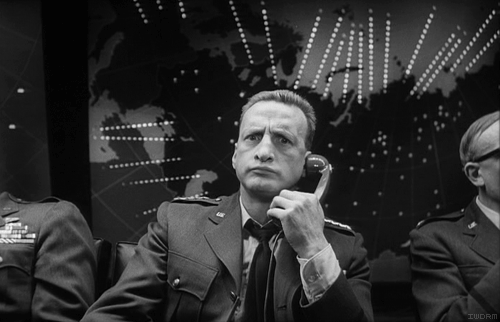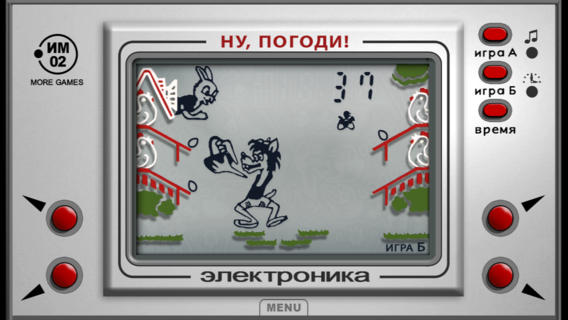Marketing for financial institutions. Part Two: Campaigning
The last time I had finished on the segmented and non-segmented campaigns and promised that tell you about the delivery of proposals to the participants of the campaign and then about the campaign depending on the channel.
Well, let's get started.

In ancient times, marketing offers reached customers (can be called campaign participants, since the client is a participant in many campaigns in the general case) through:
This scanty list eventually replenished with the following high-tech channels and channels:
At the same time, the loading of channels is carried out in a variety of ways:
Parallel loading of all (or selected) channels - the same advertisement is shoved into your email inbox, into the telephone with a message, and the same thing is repeated on the radio.
Selective download - some campaigns use only outgoing calls from the call center, some offers are delivered only via SMS or email. Accordingly, even more possibilities become available for selective loading for segmented campaigns, for example, a certain segment to notify about an offer only through calls, another segment - only via email, a third segment - only by offer in the personal account of the Internet bank. A prudent habrayuzer can calculate how many combinations on delivery channels can be made for a segmented campaign.
Oddly enough, they are still used, and quite often, but not intensively (low channel load) - because it’s expensive. Often you can see in the premium segment - offers come in exquisite envelopes, typed sensible headset on chic paper; layout, rhythm - everything is just like in people.

Here the conversation draws to a separate article, since the call center is usually divided into incoming and outgoing calls, today it is almost always equipped with IP-telephony, PDS, IVR and other technological things. Who cares - write in the comments, talk about working with Avaya (now we are just doing a project with it).
At first glance it seems pretty simple, but it was at the dawn when it was impossible to get the status of message delivery. Now the gateways are very smart: they can send only in the daytime, on weekends the time range for sending is very narrow, they understand the transition between time zones depending on the phone number, they can send from different numbers according to the segment, monitor delivery, send several times, if they received a “non-delivery”, in some cases they even know how to read the message or not. And in especially neglected cases, they know how to understand the response messages ("Send" Yes "if you want a bank employee to contact you to discuss this proposal").
Email
Almost the same as SMS, onlywith pearl buttons cooler. Here, and advanced formatting tools, and developed landing pages , advanced tracking of the status of letters through IMAP, and so on.
An interesting feature , I saw this only recently (I saw in the sense I received such a requirement - “we need to integrate with the ATM”). The bottom line is that when authorizing through a card, the bank understands that it is you and there is an offer for you that you can immediately display to you. And even program the screen to receive a response to the offer, using the buttons of the ATM. Before the start of the campaign, these offers are massively downloaded into the ATM software and carefully extracted after it ends. This is an interesting thing, I would read if someone writes.
In fact, everything is simple: the same authorization, your personal account with the “Bank Offers” section, which contains a neat list of offers especially for you + information about the shares acting in the bank (an example of a segmented and non-segmented campaign, respectively).
Usually a container for non-segmented campaigns. Proposals for campaigns on a periodic basis are placed on the site in the only order known to marketers and live there until the days the campaign expires. In some cases, under the banner there is a page with a small questionnaire that needs to be filled out in order to continue the dialogue with the bank (attention, usually in such questionnaires there is a sign of consent to the processing of personal data. Do not forget to take this right away from the bank if you are no longer interested in talking to him )
Of all that I've seen, the main argument was price. Moreover, it consisted of supporting its own infrastructure (its employees, automatic telephone exchanges, gateways) and of paying for leased channels (usually electronic channels are leased, often mailing). As I wrote earlier, electronic channels have either stepwise pricing for 1 communication, or in the form of some smooth function. In the first case, you can save a lot by competently dimming the segment.

For our own “human” channels, the situation is quite interesting, since for each campaign the capacity of each channel is calculated - in fact, how much it will be able to process outgoing offers during the campaign period. Relevant for outgoing calls - it is telemarketing - and there are cases of sophisticated croill, when part of the call is carried out by employees of the departments in their free time from visitors. They are also trying to reduce the cost of an army of call center operators through a well-thought-out IVR. By the way, the costs equal to 1 monthly salary of the entire KV, aimed at optimizing the IVR voice menu, pay off very well. I wonder if there is a market for such services - who knows, write at least a small article, it will be interesting to read.
Today I learned about a very interesting solution in Ukrainian telecoms: one of the mobile operators monitors your presence in IVR and everything you do there, including if the consultation automatically arranged you and you left the menu. In the target solution, the customer formed a segment for each IVR point and a few hours later sent a letter to customers with a more detailed description of their services / products, but only those that you asked about in IVR. The main task of this project is to quickly transfer data from the telephony database to the repository, and also quite often run a job to process segments.
As for fixing the result of processing the proposal, I personally had epic battles with the client. It seems to me so far that people have not ceased to think in the category of “either Excel or nothing” - connections like 1: M break the brain, and M: M void the signs of Homo Sapiens. According to the Siebel reference model, the relationship between the proposal and the response is 1: M, and the response does not depend on the proposal: the proposal is limited by the lifetime of the campaign itself, so only the ability to create a response to the proposal is limited. Therefore, it is possible that if you rejected the offer of the bank, then they will not send it to you again (I do not exclude that through some other channel).
People often ask what to do if the proposal has been voiced, but the client hasn’t reacted to it at all, or "I don’t have time right now, let's get it next time somehow"? We answer: it should not be fixed at all, even if the proposal hangs without a response. The response on the proposal is a binary thing, here either yes or no; any recorded response in such an ambiguous case, as I described above, will lead to completely incorrect conclusions and subsequent communication with the client (since the machine builds the segments, not the person).
For inactive campaigns (and offers, respectively), we usually prohibit the ability to record responses. But not always: for direct sales channels that “bring” responses with a delay of a day (or even two), it is possible to envisage the possibility of fixing the response, but here politics is already included, we never intervene in this matter.
Well, let's get started.

Proposal Delivery Channels
In ancient times, marketing offers reached customers (can be called campaign participants, since the client is a participant in many campaigns in the general case) through:
- Mailing lists (yes, these are the very leaflets in the mailboxes that we hate);
- Telephone dialing;
- Radio and television;
- Outdoor advertising.
This scanty list eventually replenished with the following high-tech channels and channels:
- SMS
- ATM (yes, the future has already come);
- Internet bank;
- Bank website.
At the same time, the loading of channels is carried out in a variety of ways:
Parallel loading of all (or selected) channels - the same advertisement is shoved into your email inbox, into the telephone with a message, and the same thing is repeated on the radio.
Selective download - some campaigns use only outgoing calls from the call center, some offers are delivered only via SMS or email. Accordingly, even more possibilities become available for selective loading for segmented campaigns, for example, a certain segment to notify about an offer only through calls, another segment - only via email, a third segment - only by offer in the personal account of the Internet bank. A prudent habrayuzer can calculate how many combinations on delivery channels can be made for a segmented campaign.
And how much?
Over 9000
A little more about delivery channels
Mailing lists
Oddly enough, they are still used, and quite often, but not intensively (low channel load) - because it’s expensive. Often you can see in the premium segment - offers come in exquisite envelopes, typed sensible headset on chic paper; layout, rhythm - everything is just like in people.
Telephone call

Here the conversation draws to a separate article, since the call center is usually divided into incoming and outgoing calls, today it is almost always equipped with IP-telephony, PDS, IVR and other technological things. Who cares - write in the comments, talk about working with Avaya (now we are just doing a project with it).
SMS
At first glance it seems pretty simple, but it was at the dawn when it was impossible to get the status of message delivery. Now the gateways are very smart: they can send only in the daytime, on weekends the time range for sending is very narrow, they understand the transition between time zones depending on the phone number, they can send from different numbers according to the segment, monitor delivery, send several times, if they received a “non-delivery”, in some cases they even know how to read the message or not. And in especially neglected cases, they know how to understand the response messages ("Send" Yes "if you want a bank employee to contact you to discuss this proposal").
Almost the same as SMS, only
ATM
An interesting feature , I saw this only recently (I saw in the sense I received such a requirement - “we need to integrate with the ATM”). The bottom line is that when authorizing through a card, the bank understands that it is you and there is an offer for you that you can immediately display to you. And even program the screen to receive a response to the offer, using the buttons of the ATM. Before the start of the campaign, these offers are massively downloaded into the ATM software and carefully extracted after it ends. This is an interesting thing, I would read if someone writes.
Internet bank
In fact, everything is simple: the same authorization, your personal account with the “Bank Offers” section, which contains a neat list of offers especially for you + information about the shares acting in the bank (an example of a segmented and non-segmented campaign, respectively).
Web site
Usually a container for non-segmented campaigns. Proposals for campaigns on a periodic basis are placed on the site in the only order known to marketers and live there until the days the campaign expires. In some cases, under the banner there is a page with a small questionnaire that needs to be filled out in order to continue the dialogue with the bank (attention, usually in such questionnaires there is a sign of consent to the processing of personal data. Do not forget to take this right away from the bank if you are no longer interested in talking to him )
Distribution of offers by channels ...
Of all that I've seen, the main argument was price. Moreover, it consisted of supporting its own infrastructure (its employees, automatic telephone exchanges, gateways) and of paying for leased channels (usually electronic channels are leased, often mailing). As I wrote earlier, electronic channels have either stepwise pricing for 1 communication, or in the form of some smooth function. In the first case, you can save a lot by competently dimming the segment.

For our own “human” channels, the situation is quite interesting, since for each campaign the capacity of each channel is calculated - in fact, how much it will be able to process outgoing offers during the campaign period. Relevant for outgoing calls - it is telemarketing - and there are cases of sophisticated croill, when part of the call is carried out by employees of the departments in their free time from visitors. They are also trying to reduce the cost of an army of call center operators through a well-thought-out IVR. By the way, the costs equal to 1 monthly salary of the entire KV, aimed at optimizing the IVR voice menu, pay off very well. I wonder if there is a market for such services - who knows, write at least a small article, it will be interesting to read.
Today I learned about a very interesting solution in Ukrainian telecoms: one of the mobile operators monitors your presence in IVR and everything you do there, including if the consultation automatically arranged you and you left the menu. In the target solution, the customer formed a segment for each IVR point and a few hours later sent a letter to customers with a more detailed description of their services / products, but only those that you asked about in IVR. The main task of this project is to quickly transfer data from the telephony database to the repository, and also quite often run a job to process segments.
... and their learning
As for fixing the result of processing the proposal, I personally had epic battles with the client. It seems to me so far that people have not ceased to think in the category of “either Excel or nothing” - connections like 1: M break the brain, and M: M void the signs of Homo Sapiens. According to the Siebel reference model, the relationship between the proposal and the response is 1: M, and the response does not depend on the proposal: the proposal is limited by the lifetime of the campaign itself, so only the ability to create a response to the proposal is limited. Therefore, it is possible that if you rejected the offer of the bank, then they will not send it to you again (I do not exclude that through some other channel).
People often ask what to do if the proposal has been voiced, but the client hasn’t reacted to it at all, or "I don’t have time right now, let's get it next time somehow"? We answer: it should not be fixed at all, even if the proposal hangs without a response. The response on the proposal is a binary thing, here either yes or no; any recorded response in such an ambiguous case, as I described above, will lead to completely incorrect conclusions and subsequent communication with the client (since the machine builds the segments, not the person).
For inactive campaigns (and offers, respectively), we usually prohibit the ability to record responses. But not always: for direct sales channels that “bring” responses with a delay of a day (or even two), it is possible to envisage the possibility of fixing the response, but here politics is already included, we never intervene in this matter.
